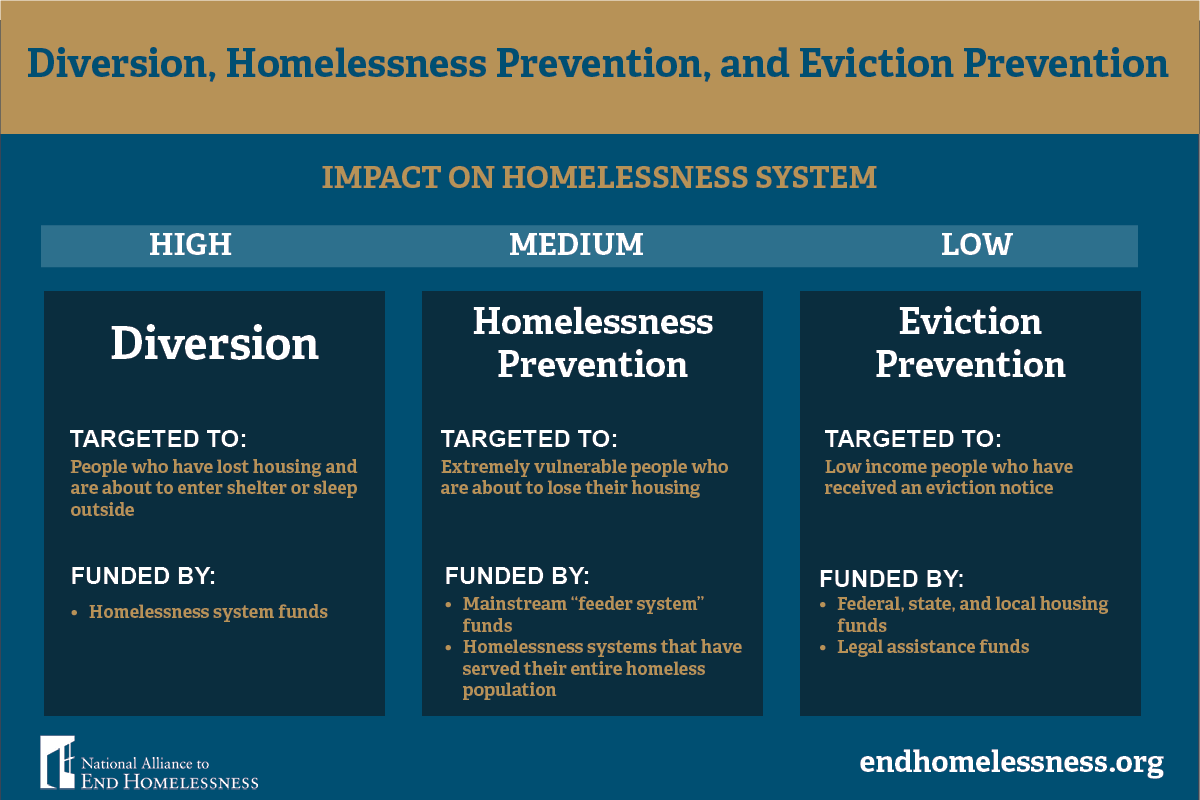What Is Diversion?
Diversion is an intervention designed to immediately address the needs of someone who has just lost their housing and become homeless. Diversion is a client-driven approach; its goal is to help the person or household find safe alternative housing immediately, rather than entering shelter or experiencing unsheltered homelessness. It is intended to ensure that the homelessness experience is as brief as possible, to prevent unsheltered homelessness, and to avert stays in shelter.
How Does Diversion Work?
Diversion is an intensive service intervention. Through an interactive problem-solving conversation with the client, staff seek to:
- understand what caused a person’s housing crisis;
- explore what immediate solutions to the crisis may be possible; and
- help them pursue a solution(s).
The idea is to immediately get the client into a safe housing alternative, which may be short- or longer-term. Some of these options may include:
- a negotiated return to their previous housing;
- short-term, non-shelter accommodation;
- apartments or homes, (including shared housing);
- returns to family.
What Staff Needs to Provide Diversion
Staff should have training in skills like mediation, negotiation, conflict resolution, active listening, and strengths-based approaches. They should have access to flexible financial resources for things like rent arrears, transportation, utilities, and deposits. Staff also should have the ability to connect the client with community-based services, as needed.
Every person who has lost their housing and is seeking homelessness assistance should be immediately engaged in a diversion intervention/conversation, and the focus of that conversation should be on that person’s housing options. However, those options are not always available or acceptable to the client. In these cases, diversion staff should be prepared to provide information on shelter options and take necessary steps to arrange shelter for the client, if it is available.
Diversion should not be a mechanism for denying access to available shelter, but rather one for finding a better alternative than shelter or the street.
Why Do Diversion?
The intent of diversion is to give someone who has become homeless a positive alternative to entering emergency shelter or being unsheltered.
Shelter can be traumatic, unhealthy, and unsafe. Some data show that people who enter shelter experience longer periods of homelessness than those who are diverted from it. No matter how well-run shelter is, clients prefer to be in housing, and housing is more likely to improve their well-being.
Likewise, being unsheltered has high risk of negative health outcomes and involvement with the criminal justice system (such as being ticketed or fined for sleeping on the streets).
Diversion is also a much more effective intervention from the perspective of homeless services systems and ending homelessness. Diversion stems the inflow into shelter; every person diverted makes a shelter bed available for someone else who needs it. It is considerably less costly, on average, than a shelter stay. Diversion avoids the emergency-related costs of unsheltered homelessness including ambulance use, sanitation, and interaction with law enforcement.



